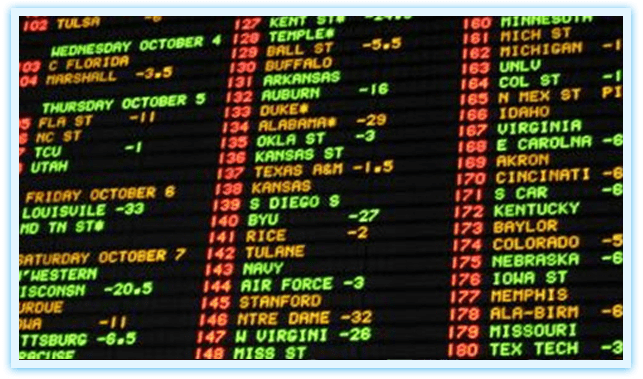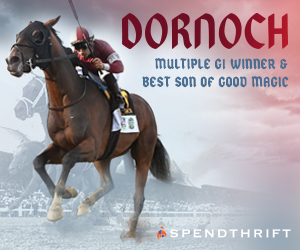
By Steve Zorn
When Pool 3 of the Churchill Downs Kentucky Derby future wager closed this past Sunday, it was no surprise that the early Derby favorite was “All Other Three-Year-Olds” at 3-1. In the 22 years that the Derby future bet was been offered to all horseplayers – not just those who could place a fixed-odds future bet at a casino race book, but also to anyone who could bet at a race track or on an ADW – a horse from the “all other” category has ended up winning the race nearly half the time, 10 out of 22 runnings. So, historically at least, “all other” at 3-1 looks like a good bet for a chance that should, based on the record, be about 6-5.
In fact, “all other” has been a winning bet over the life of the Derby future wager. A $2 bet made on the field each year in the equivalent of this year’s Pool 3 (the number of pools has expanded over the years, not even counting last year’s seven(!), occasioned by the delay of the race until September) would have returned a total of $70, for a $2 ROI of $3.18. An “all other” bet in Pool 4, which this year will close on March 7th, has historically done even better, with a $2 ROI of $4.24. And even the final future pool, which this year closes March 28th, after the Florida Derby but before the other four major US Derby preps, shows a $2 ROI of $3.97 for betting “all other,” thanks in large part to Mine That Bird in 2009.
On the other hand, betting a specific horse in a Derby future pool is rarely a good idea. The biggest problem is that a lot of the horses listed individually for the wager never make it into the Derby starting gate. Historically, horses listed by name in what is now Pool 3 represent only 43% of eventual Derby starters. Even in the final round (which will be Pool 5 this year), 20% of the Derby runners will come from “all other.”
It stands to reason that if there’s a consistent positive ROI for betting the field, then there must be an even larger (because of takeout) negative ROI for betting on a named horse. It does seem that the folks who design the bet have gotten somewhat better over time at identifying actual runners who will make it to the Derby – no “all other” horse from Pool 4 has won the race since Animal Kingdom in 2011, and no “all other” from Pool 5 has won since Mine That Bird – so perhaps the mutuel field isn’t as good a bet as it once was, but, still, it’s pretty hard to identify a Derby runner, much less a winner, 11 weeks out from the actual race.
Nonetheless, the Derby future wager does attract a few dollars. Not counting last year, in which the pandemic-induced delays stretched the wager out over seven rounds, total Derby future bet wagering rose from a mere $676,000 in 1999, its first year, to $1.9 million in 2019. That’s not nothing (like, say, the infinitesimal handle on the Stronach tracks’ ill-fated “roulette” bet), but it pales in comparison to the money that’s bet on Derby Day itself. In 2019, for example, total handle on the Derby was $165 million, and the total for the Derby Day card at Churchill was $251 million, or more than 2% of all the money bet on all the thoroughbred races in the US that entire year. In fact, Derby Day handle has been steadily increasing over the years, while aggregate US handle has stagnated, even declining in real, inflation-adjusted terms. In 2003, for example, the Derby Day card generated $140 million in handle, or about 0.9% of US horse race betting for the year. By 2019, betting on the first Saturday in May had gone up by some 75%, while annual US handle was decreasing, with the result that the day’s fraction of all US betting for the year more than doubled.
Compared to the huge handle on Derby Day, the couple of million that’s bet on the Derby future wager seems like very small potatoes. Does that relatively minuscule handle justify the effort needed to put the bet up online? Evidently, the number crunchers at Churchill Downs Inc. (CDI) must think so, and in fact, by increasing the number of pools and adding other future bets (for example, the “Sire Pool,” offered since 2016), they’ve shown a strong commitment to the bet. Why, for an offering that represents only a fraction of 1% of CDI’s annual profit?
The best explanation is that the Derby future bet functions as inexpensive – even marginally profitable – advertising for the Derby weekend. CDI’s overall corporate strategy over the two decades that it has offered the Derby future wager is to minimize its involvement in actual racing except for the Oaks-Derby weekend, as evidenced by its shedding of Hollywood Park, Calder, and soon, Arlington. The future bet helps to turn Derby weekend into a six-month extravaganza. Good for CDI’s bottom line? Almost certainly. Whether the bet is a good thing for those who actually place a wager on an individual horse – rather than on the “all other” field – is another question.



